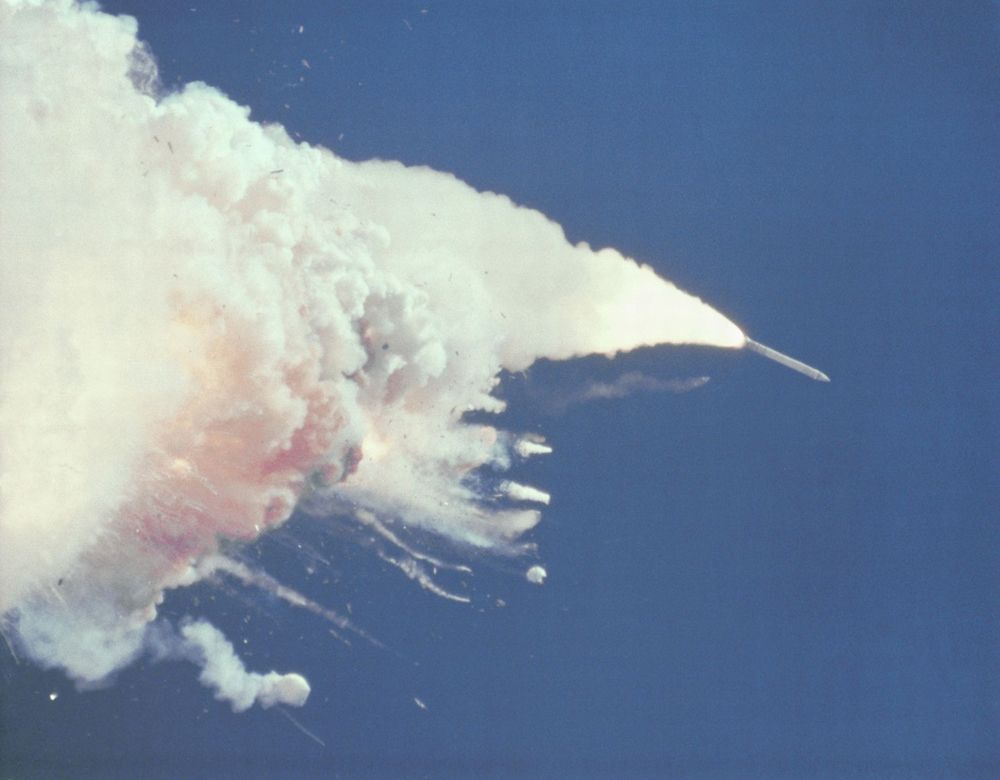

The ice inspection team was sent to the launch pad several times overnight to evaluate conditions at the launch pad. Those that could not be drained were left running overnight, and strong wind gusts blew water onto pad structures where it subsequently froze. With sub-freezing temperatures predicted, ground crews drained most of the water pipes at the launch pad to minimize ice formation. The minimum predicted air temperature at the launch pad bottomed out at 22☏ for the hours just before dawn on Tuesday, January 28th. Clear skies were forecast, but unseasonably cold weather was expected to sweep through central Florida. After Monday's scrub, weather forecasters briefed managers on the outlook for Tuesday morning, January 28th. At 12:35 p.m., the launch was scrubbed for January 27th and rescheduled for Tuesday, January 28th at 9:38 a.m. The ground crew eventually removed the tool, but by that time crosswinds at the Shuttle Landing Facility rose above the acceptable limit for a Return-To-Launch-Site (RTLS) emergency landing.

After the crew boarded Challenger, a tool used to close the hatch became stuck. The countdown then proceeded towards a launch on Monday, January 27th at 9:37 a.m. However, as it turned out, the weather was fine on that Sunday morning leading launch director Gene Thomas to say "Sunday morning, the weather was perfect. Air Force weather forecasters provided a pessimistic Sunday forecast to NASA managers the night before, causing managers to postpone Sunday's launch in advance. After a two-day slip related to the previous shuttle mission, bad weather at an emergency landing site in Senegal and problems with an alternate site in Morocco delayed the launch to Sunday, January 26th. Weather's role in scheduling changes prior to the actual launch dayĬhallenger's launch had originally been scheduled for the afternoon of January 22nd. Tests conducted during the subsequent investigation showed that O-rings were much less resilient at lower temperatures, but the extreme cold at the Kennedy Space Center was not the only weather factor involved with this tragedy. Wind shear aloft may have been a contributing factor as well with two different airstreams in the vicinity of the launch site of the Space Shuttle Challenger. According to the Report of the Presidential Commission on the Space Shuttle Challenger Accident, weather conditions were likely one of the factors that contributed to the incident. The spacecraft disintegrated over the Atlantic Ocean, off the coast of Cape Canaveral, Florida at 11:39 EST (16:39 UTC). It was also the first mission to have a civilian on board, American teacher Christa McAuliffe. STS-51-L was the 25th American Space Shuttle Program flight since the program began in 1981. Last Friday marked the 36th anniversary of the Space Shuttle Challenger disaster which occurred on January 28, 1986, when the NASA Space Shuttle orbiter Challenger (mission STS-51-L) broke apart 73 seconds into its flight leading to the deaths of its seven crew members.


 0 kommentar(er)
0 kommentar(er)
